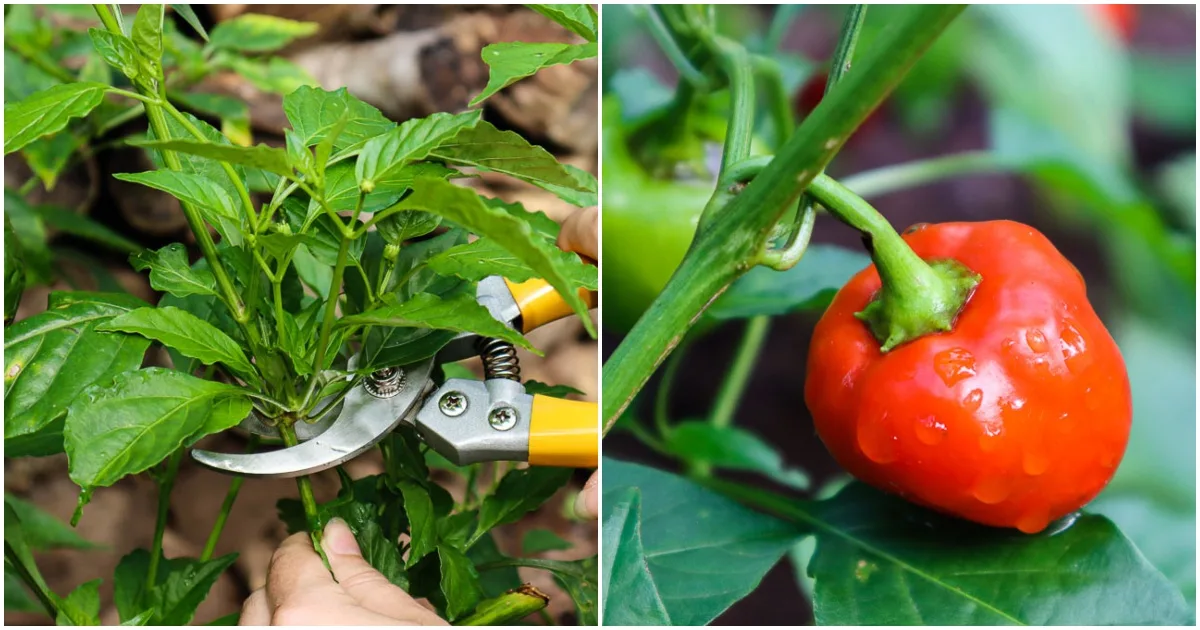
Few things bring more joy in a late-season garden than harvesting a bounty of bright-hued peppers. This gem of a garden plant is considered low maintenance—there’s rarely much you need to do once a healthy seedling gets in the ground.
But that’s not to say that issues can’t arise. Pepper plant problems can destroy your harvest potential if left unchecked, so it’s essential to know how to diagnose the problems before they get out of control.
Below, you’ll see a comprehensive summary of 25 pepper plant problems and the steps you can take to get your garden crop back on track for a better harvest.
25 Common Pepper Plant Problems
Diagnose what’s wrong with your pepper plants by identifying your problem from the following categories.
Seed Starting and Planting Problems
1. The Problem: Your pepper seeds aren’t germinating.
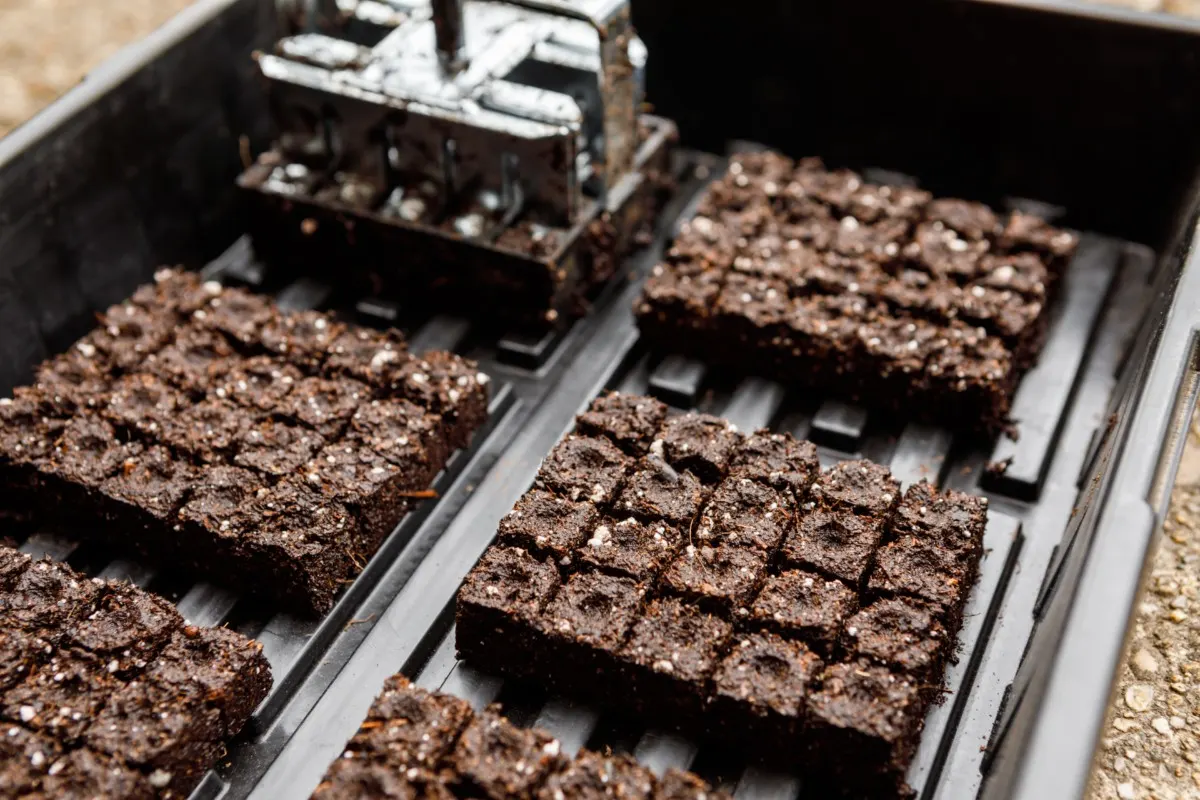
The Solution: Peppers are one of the more temperamental plants to start from seed, and you might get a low germination rate if your conditions aren’t optimal.
You’ll have the best luck by keeping your seeds consistently warmed around 85 degrees with a heating mat under the seed starting tray. It’s also best to plant the seeds shallowly so that they get some sunlight.
It can take six weeks or longer for the seeds to germinate, so patience will work in your favor.
2. The Problem: You started your pepper seeds too early indoors.
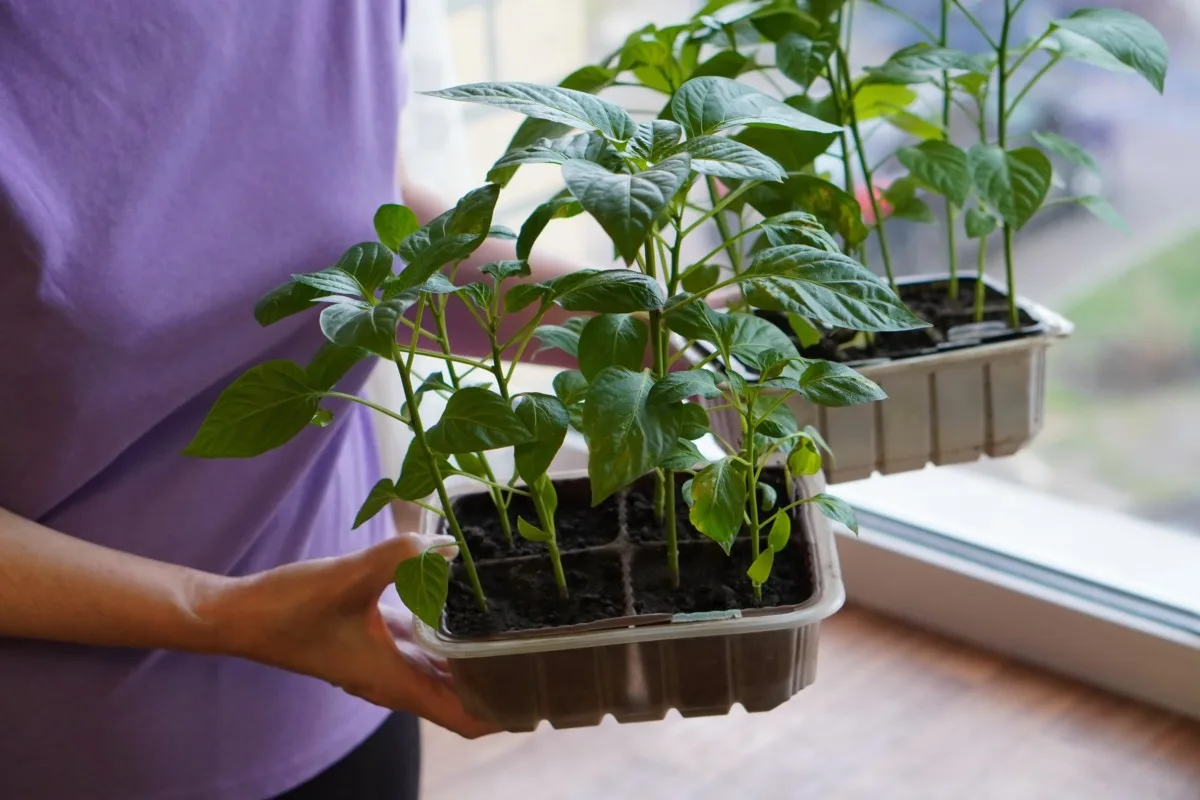
The Solution: Pepper plants require a long, hot growing season, so most gardeners start their seeds indoors or purchase transplants.
The general rule is to start your seeds between six and eight weeks before your growing region’s last expected frost date. Sometimes, though, the weather doesn’t cooperate, and you’re left with seedlings that are ready to get in the ground before the weather will support them.
What works for me is to put the plants in a “dormancy state” for a week or two. I turn off their grow lights to slow down growth, and then turn them back on a day or two before taking the plants outdoors to revitalize them.
Click here to read more about starting pepper plants indoors.
3. The Problem: It’s too cold outdoors for your pepper transplants.
The Solution: Peppers shouldn’t go outside until nighttime temperatures are consistently above 55°F. If you jumped the gun and put your plants out too early, you can protect them with small row covers to add an extra 4 to 10 degrees of heat.
Another way to add some warmth is to place a jug filled with water near each plant. The jug will pull in heat during the day and act like a hot water bottle in the evenings to warm the young seedlings.
4. The Problem: You planted your peppers too close together.
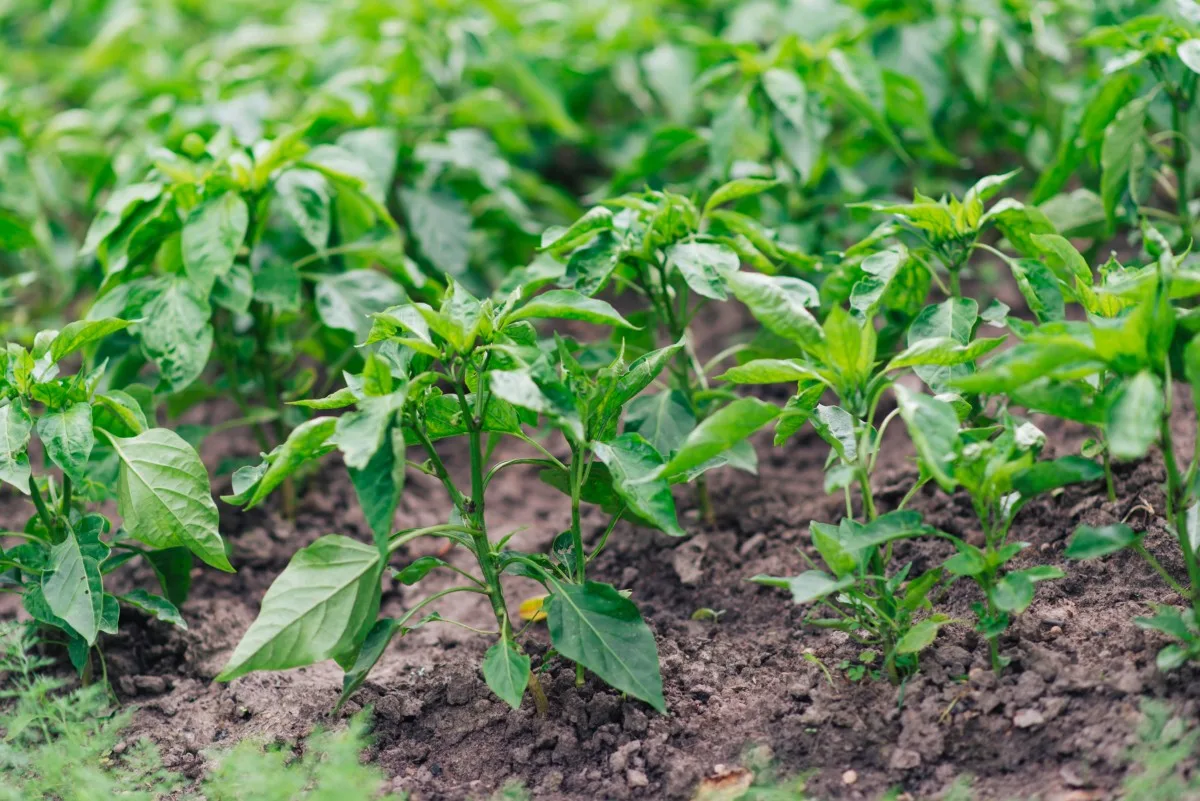
The Solution: Unless you’re growing a micro variety, most pepper plants require 12 to 18 inches of spacing each. Overcrowding your plants can lead to problems in airflow, which produces prime conditions for bacteria and viral pathogens to flourish.
For the benefit of your whole crop, it’s best to thin out tightly packed plants to ensure each one has the space it needs for optimal production. You’ll get better results from fewer, healthier plants than from ones that are competing with each other.
5. The Problem: Your pepper plants are starting to topple over.
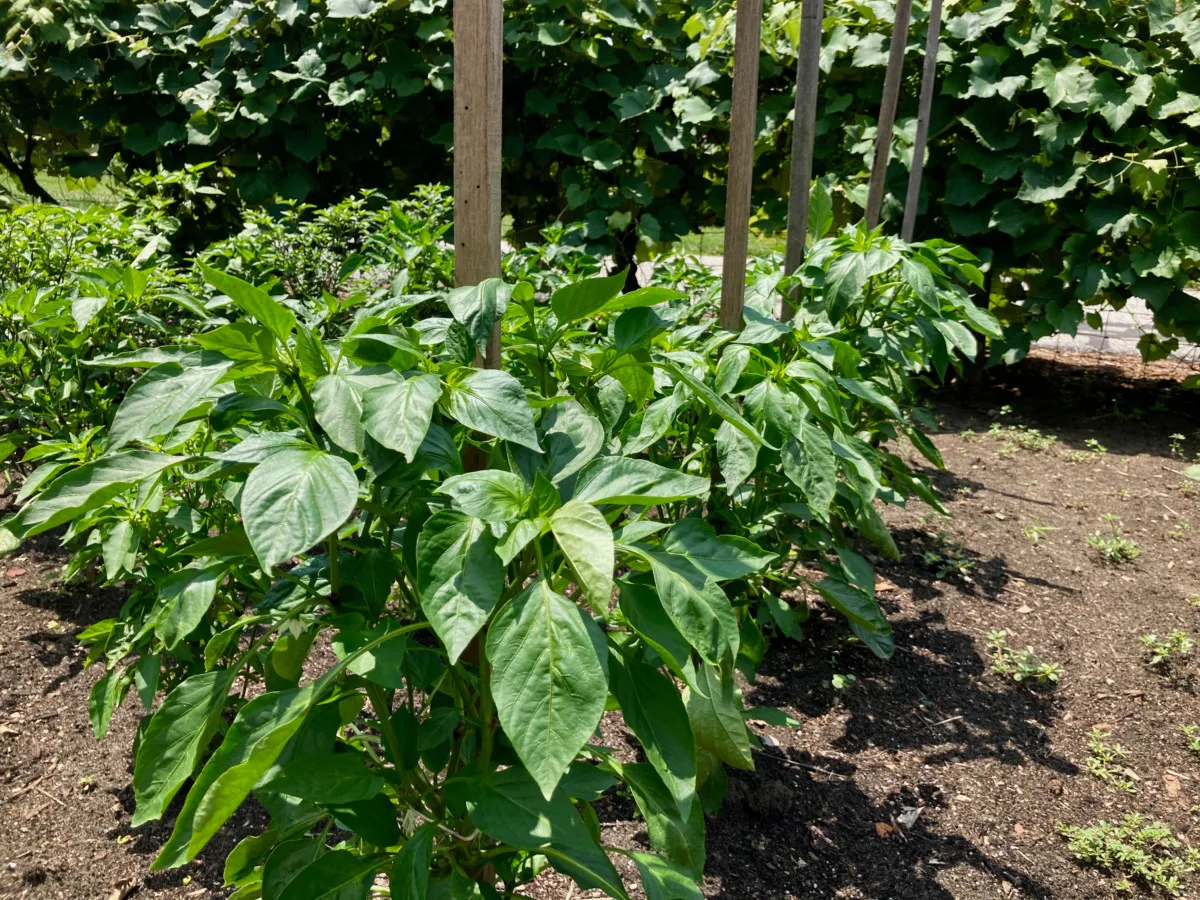
The Solution: Healthy pepper plants tend to grow tall, and they will need staking to stay upright. You can tie a row together with tomato twine and steaks using the Florida Weave system, or by putting each plant into tomato cages.
Pest Problems
6. The Problem: Your once-healthy plants look like their stems have been cut at the base.
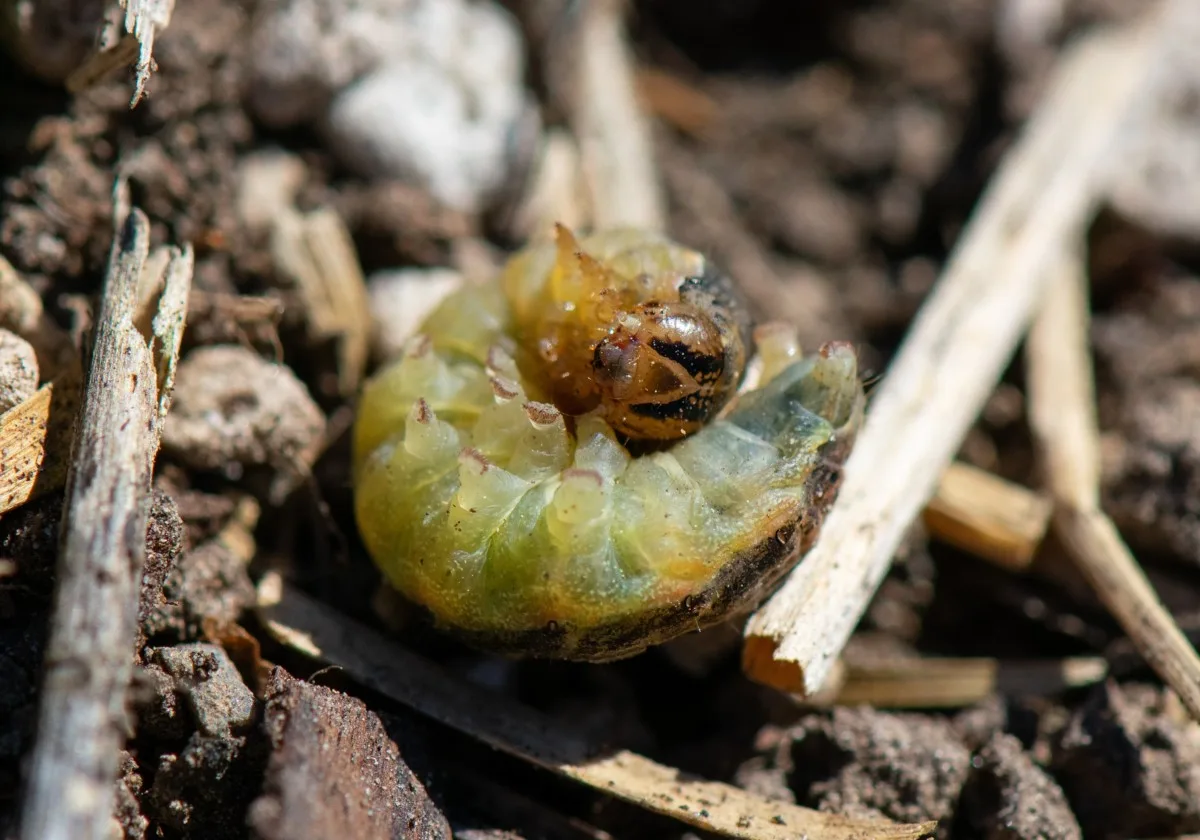
The Solution: It sounds like you have cutworms! These destructive insects attack the base of young plants and can quickly wreck a full planting.
There’s not much you can do to save a plant that’s been attacked, but you can protect others by putting a thin cardboard or aluminum foil tube around the base of each plant, ensuring that the bottom is a few inches in the soil. This will corral the cutworms in that area, preventing them from feasting on other plants.
7. The Problem: Entire pepper plants are suddenly defoliated.
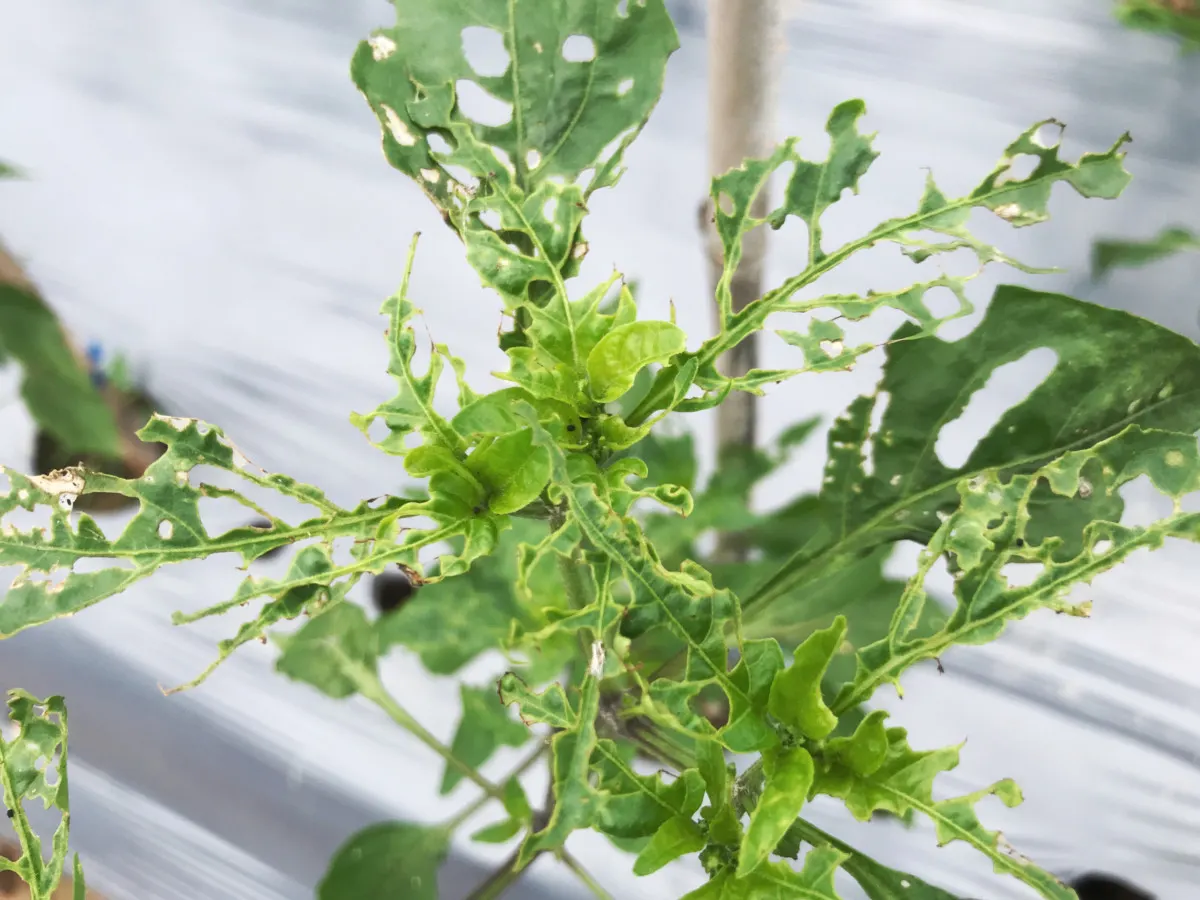
The Solution: If you wake up one morning to see your pepper plants looking like skeletons of their former selves, then tomato hornworms are likely to blame.
These fat green caterpillars have voracious appetites and will destroy your entire crop if you don’t pull them off your plants. But here’s the good news—chickens love to eat them!
Click here for our in-depth article on controlling hornworms.
8. The Problem: Your plants have discolored, curling leaves, are covered with a sticky substance, and are overrun with tiny insects or their empty white skins.
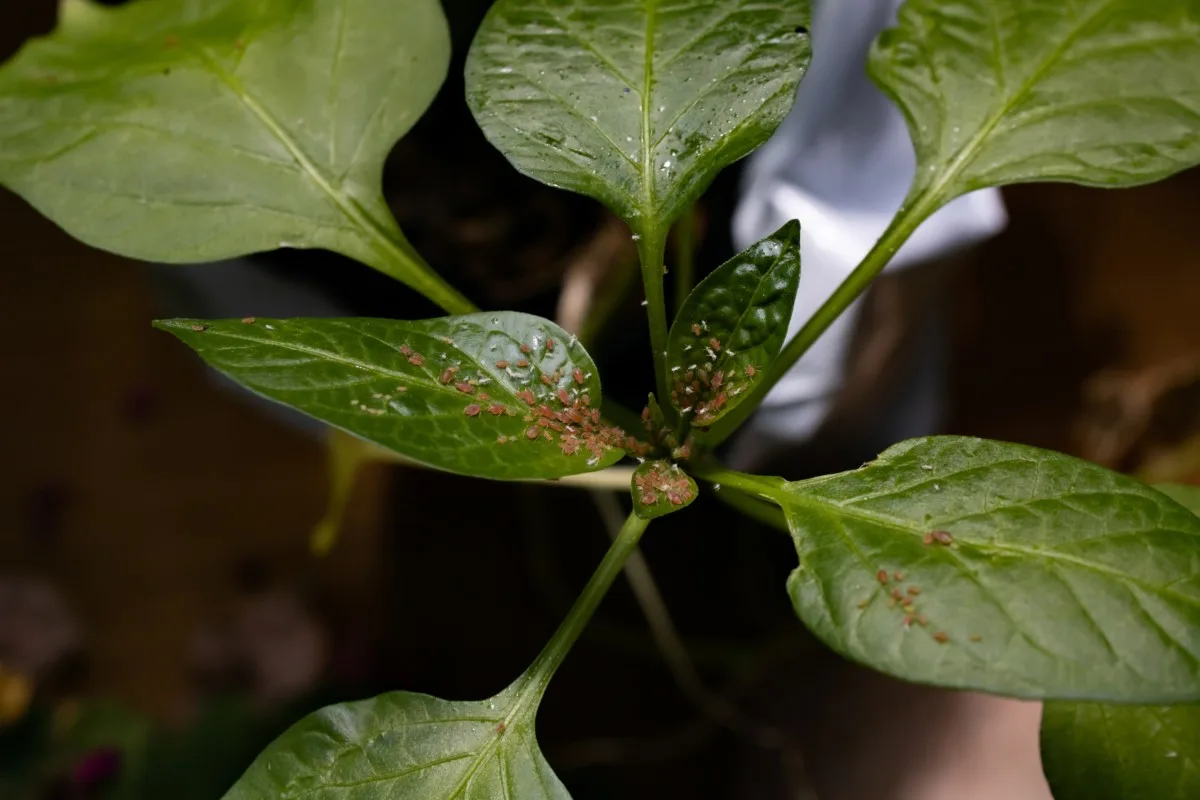
The Solution: An aphid infestation is a common pepper plant problem. Not only do these tiny insects weaken your plants by sucking the juice out of their stems, but they also create entry points for destructive mold and fungus.
Ladybugs are a natural way to keep aphids in check. Create prime habitat space for this beneficial predator by planting some marigolds, cosmos, and other varieties of their favorite flowers. You can also coat each pepper plant in neem oil or a soap-based insecticide to keep their populations in check.
Click here for our in-depth article on controlling aphids.
9. The Problem: Your pepper leaves are suddenly filled with tiny holes.
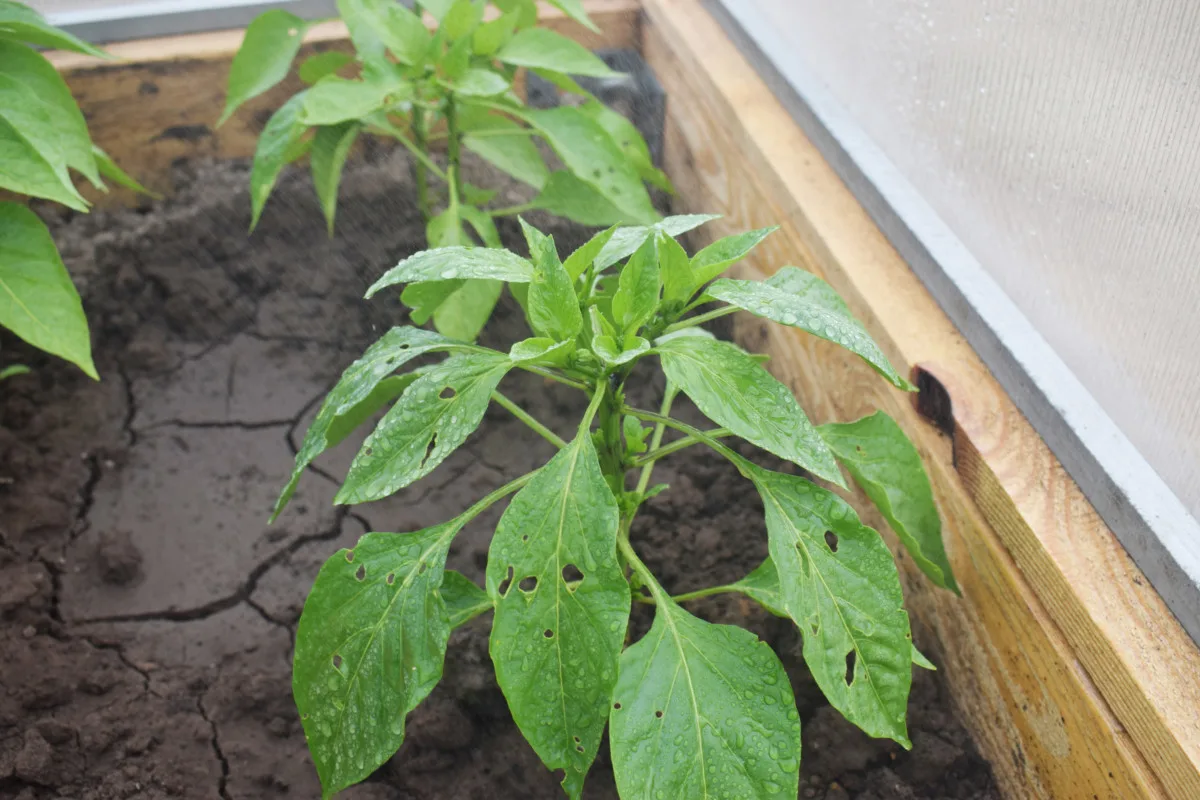
The Solution: Plant leaves rendered into a delicate lace is a sure sign of flea beetles. These tiny black insects are smaller than a period, and jump from plant to plant so quickly they can be hard to spot, save for the damage they leave behind.
Flea beetles tend to attack younger plants, so yours should be okay once they get established. They will only kill off plants in extreme cases, so you can often just wait them out.
A heavy mulch in the garden bed can prevent them from getting established, and you can also use sticky traps around their base. Some people also have luck planting radishes as a “trap crop” near their peppers.
Click here to learn more about how to deal with flea beetles.
10. The Problem: Your pepper fruit has small holes in it.
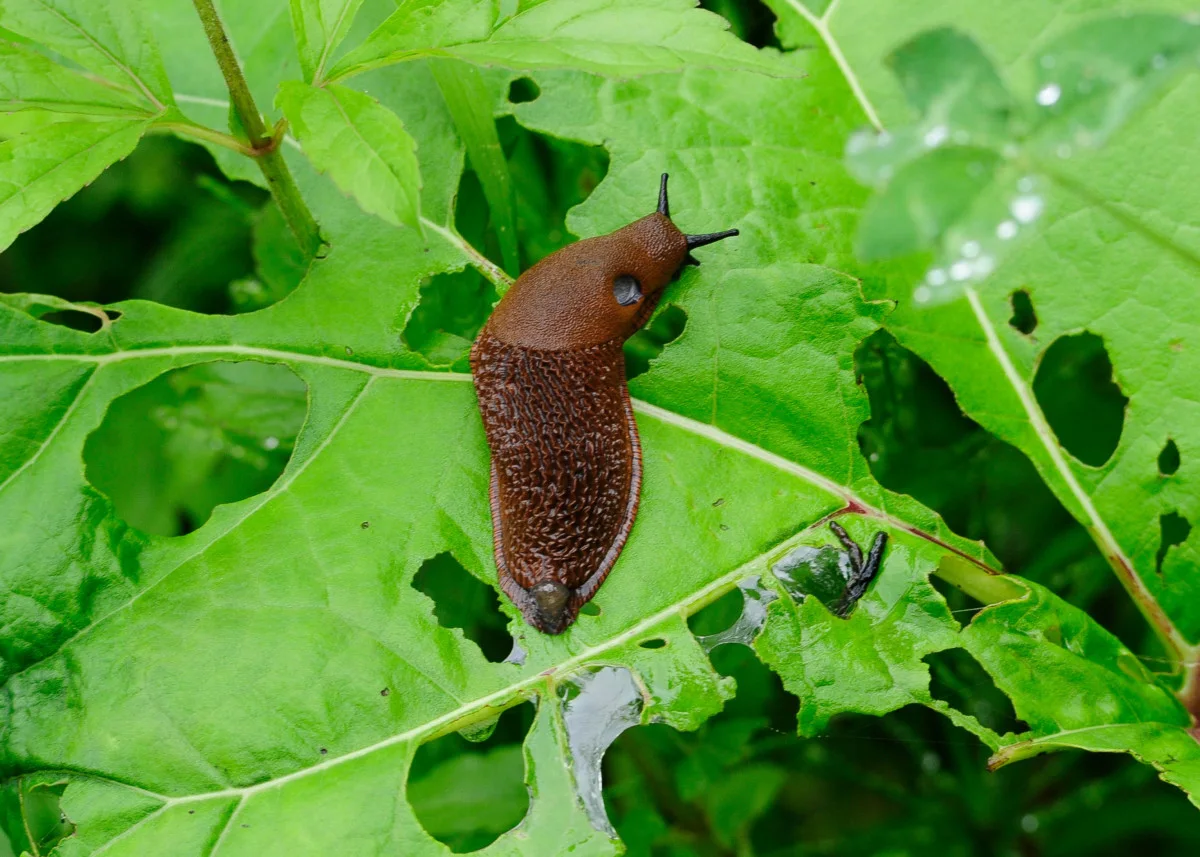
The Solution: Pepper fruit that looks slightly wormy has often fallen victim to slugs. Not only are these wounds unsightly, but they create an entry point for other pests and decay issues.
You’ll have more problems with slugs if your peppers are growing in thick, moist mulch, but slug traps can help keep them under control.
Click here to read our in-depth article on dealing with slugs in the garden.
11. The Problem: Your plants have their tops shorn off.
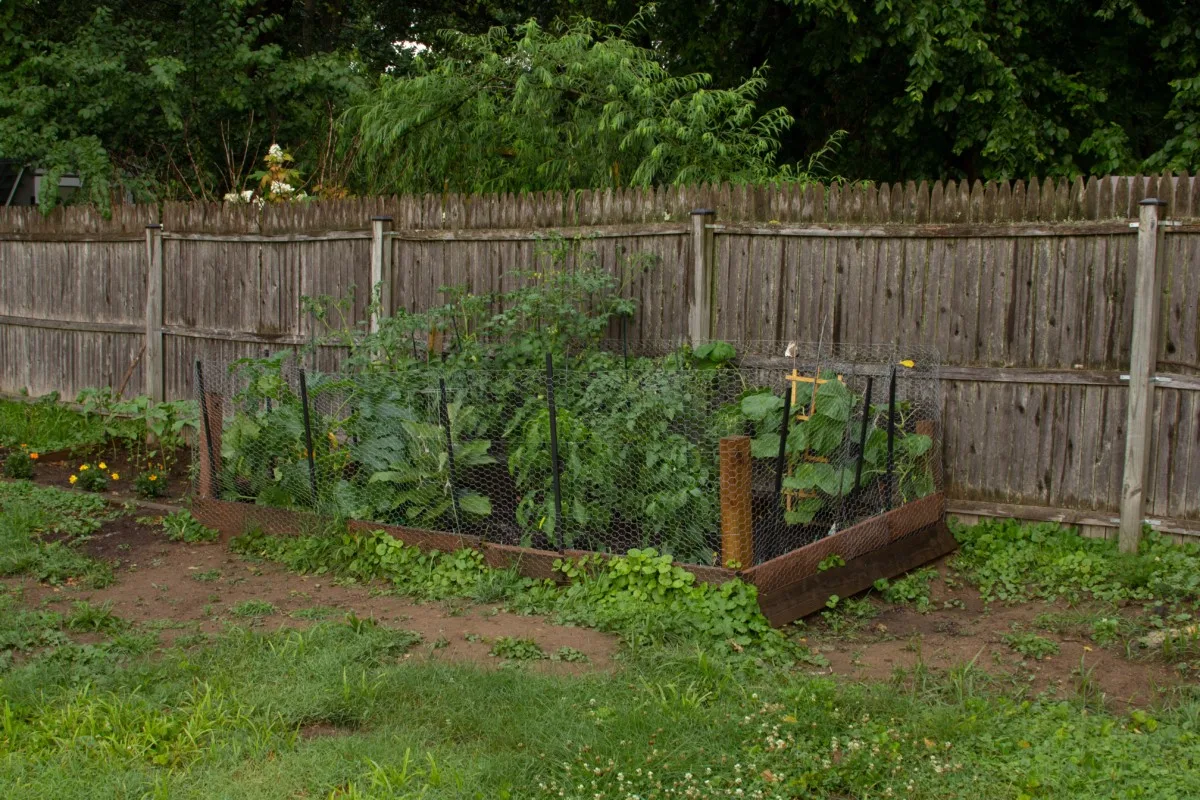
The Solution: If your pepper plants look like they have been run down with a mower, you likely have deer to blame. Though they tend to avoid the fruit itself, these garden destroyers are happy to chew up pepper leaves.
A big garden fence—at least eight feet tall—will keep deer out of your growing space. Better yet, consider a farm dog to scare them away.
Click here for more ways to keep deer out of your garden.
Nutrient and Disease Problems
12. The Problem: You have lots of lush green leaves but few blossoms or fruit.
The Solution: Pepper plants with excessive foliage, but minimal fruit production is a common sign of too much nitrogen. This likely means that you’ve over-applied the fertilizer and now have a shortage of phosphorous in the soil.
To amend the problem, look for a specialized tomato fertilizer with a higher ratio of phosphorous (the middle number on the bag).
13. The Problem: Your pepper leaves have developed powdery white splotches.
The Solution: This sounds like a case of powdery mildew, a fungal infection that will quickly will your full pepper crop if left unchecked. You can use an organic fungicide to stave off the damage, but you’re often better off removing infected plants immediately to try to slow down the spread.
You can reduce the risk of mildew by watering your pepper plants from below, ensuring that they get lots of sunlight, and maintaining good air circulation so that they don’t stay moist.
14. The Problem: The bottom of your pepper fruits are starting to rot.
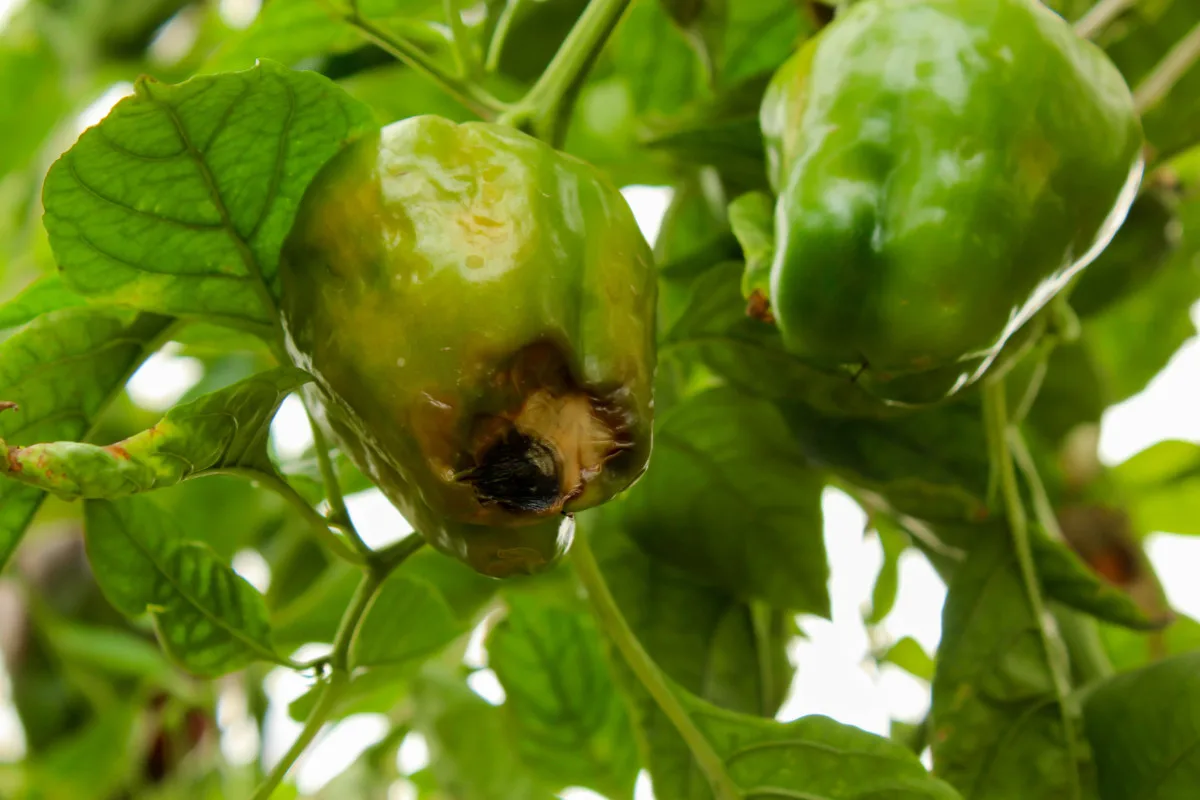
The Solution: Blossom end rot is a classic pepper problem, and it’s one of the most discouraging things you can experience after almost a full season of carefree growing. This condition is usually caused by a calcium deficiency, so proper soil management can prevent the problem.
Make sure your plants get lots of well-balanced compost early in their lives to prevent blossom end rot, and water consistently throughout the growing season. You can also add a tablespoon of powdered milk to the holes at planting for extra supplementation.
You can still eat peppers that are afflicted. Just cut off the mushy tip and enjoy the rest.
Click here to read more about dealing with blossom end rot.
15. The Problem: Your pepper leaves are becoming spotty and discolored, with some drooping and falling off the plants.
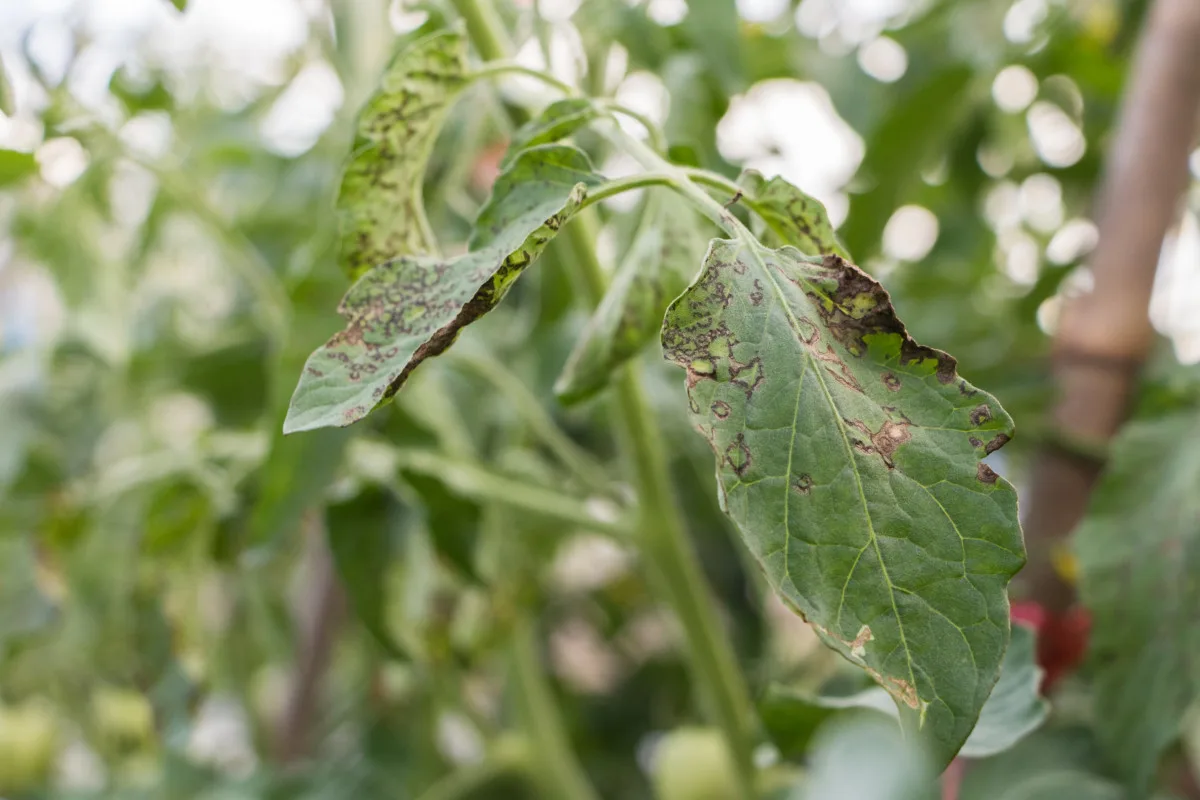
The Solution: Spotty pepper leaves have often fallen victim to an infection known as bacterial leaf spot. There’s not much you can do once it shows up on your plants, so prevention and containment are key.
First, remove any infected plants from your garden to slow down the spread. The pathogen can stay in the soil for several years, so keep peppers out of the place of contamination for at least five. If bacterial leaf spot becomes a reoccurring problem, it’s best to plant disease-resistant varieties with codes like HR: BLS 1-3 or IR: TEV.
16. The Problem: Your plants have wilted leaves, lesions along the stems, and the fruit is turning black.
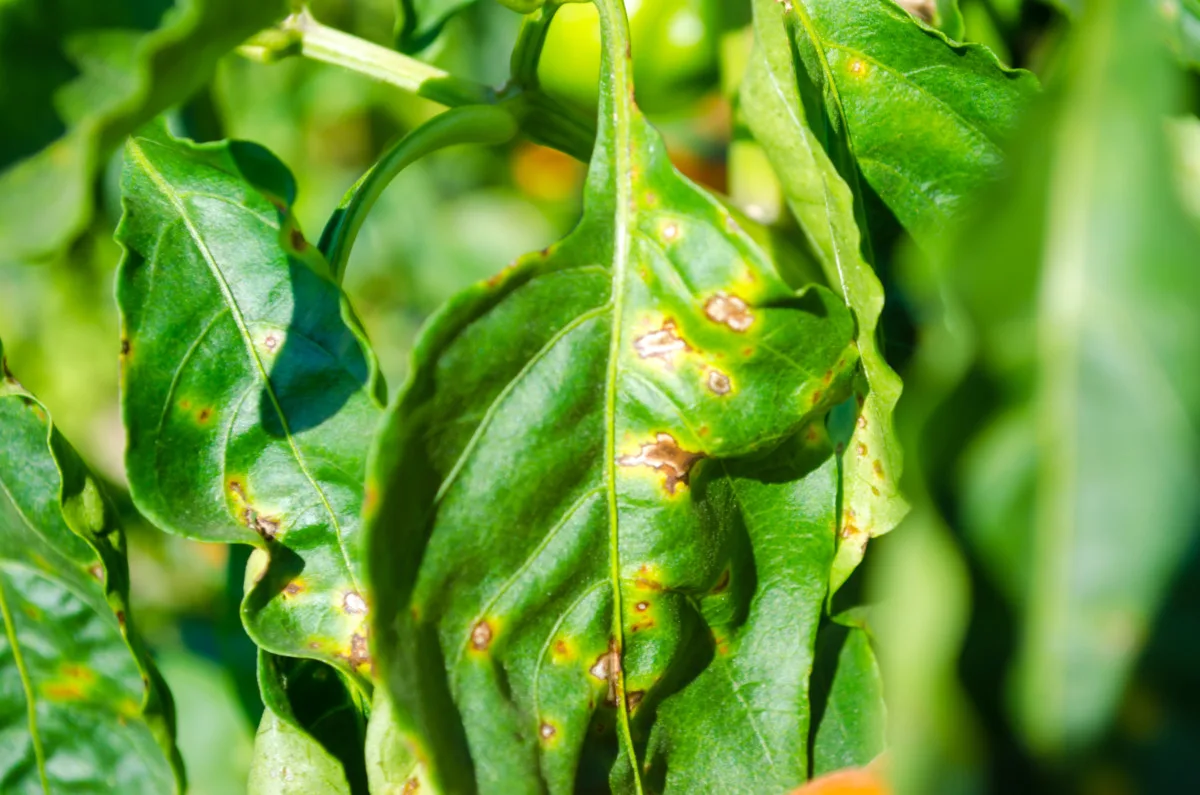
The Solution: Phytophthora is a fungal disease that typically infects pepper plants where the stems meet the soil. It’s often associated with overly wet conditions, so ensuring your plants have lots of sunlight and good drainage will slow down the spread.
If it becomes a constant problem, consider planting your peppers in raised beds next year.
17. The Problem: Your peppers have mushy brown spots (not just along the bottom)
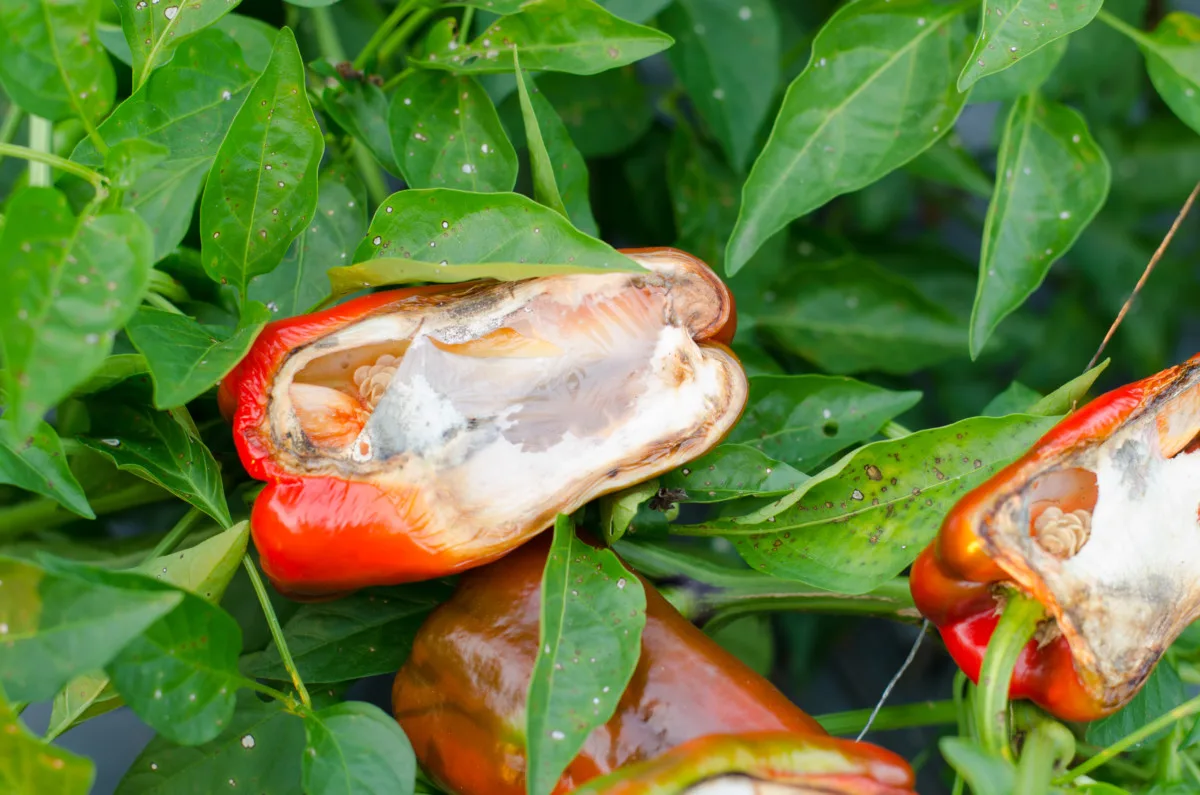
The Solution: Sunken soft spots throughout your pepper fruit can be a sign of anthracnose disease. This fungal condition will overwinter in the garden, so you’ll need to remove all infected plants and fruit from your growing space to prevent it from returning.
In the meantime, you can cut the soft spots out of the peppers after harvesting and eat the rest of the fruit.
18. The Problem: The pepper leaves are firm but wrinkly with bright yellow spots.
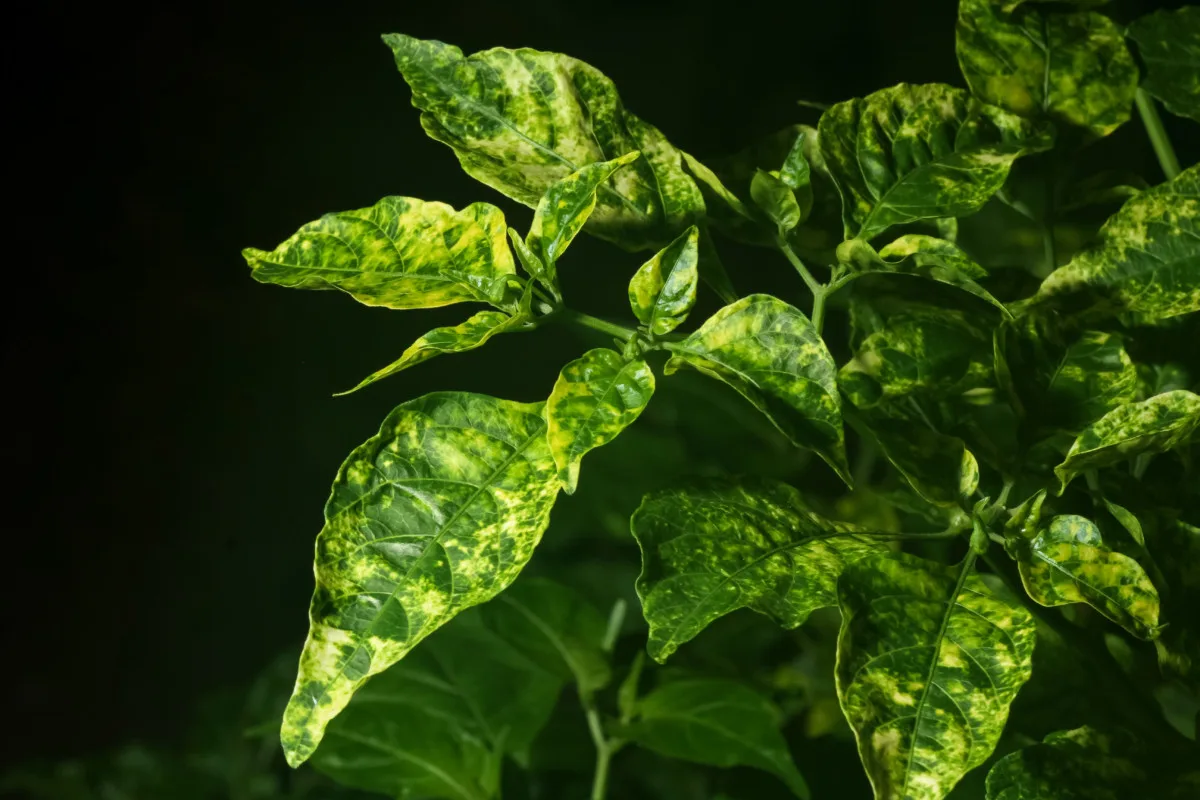
The Solution: This sounds like a classic case of cucumber mosaic virus, another undesirable condition caused by aphids and other sap-sucking insects. These tiny bugs will stunt your plants, and unfortunately, there’s little you can do to save them once they become infected.
All affected plants should be removed and destroyed, and you should keep peppers out of that growing space for at least a year, so you don’t inadvertently spread the virus.
19. The Problem: The pepper plant’s lower leaves are yellowing and dying, and the stem might be splitting lengthwise.
The Solution: These symptoms sound like verticillium wilt, a soilborne fungus that can quickly decimate plants in the nightshade family. You’re likely going to need to remove any infected plants from your garden immediately, and it’s a good idea to plant wilt-resistant varieties next season.
Environmental Problems
20. The Problem: The pepper plants are becoming dry and discolored with thinning leaves.
The Solution: This sounds like a case of sunscald. More than eight hours of sunlight can stress young pepper plants and kill off established leaves. This often happens when you don’t harden your plants off before placing them outdoors, or when they are exposed to extreme heat for extended periods.
Protect young plants with shade cloth or by planting them in a space where they will get partial shade, preferably in the afternoon.
21. The Problem: Your pepper plants have dropped their flowers without setting any fruit
The Solution: If you’re raising healthy-looking pepper plants that produce flowers that fail to turn into fruit, you’ve likely fallen victim to the weather. Conditions that are too hot or too cold can stress the blossoms and cause them to fall off before pollination.
Depending on the weather, your plants might need more shade, or they might need a few more weeks to warm up before setting fruit.
22. The Problem: You have dead or dying leaves and stunted fruit.
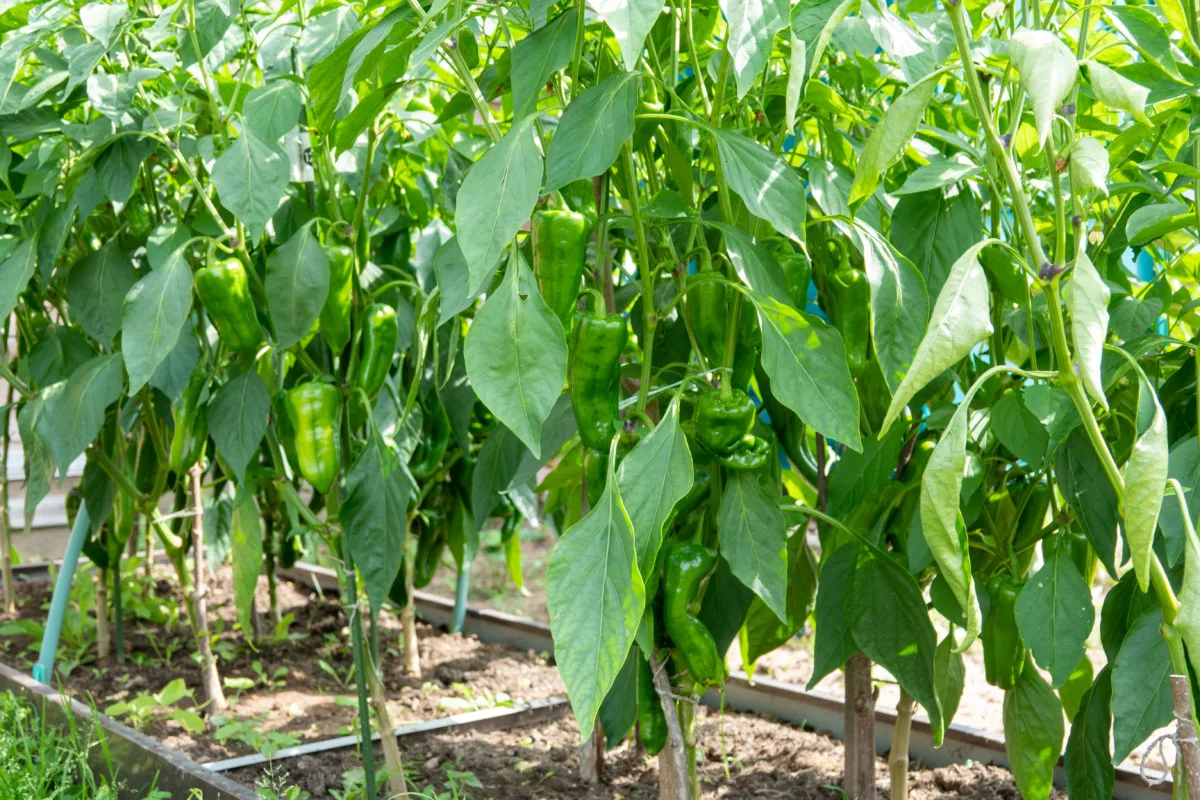
The Solution: Underwatering is one of the easiest ways to stress pepper plants and trigger these symptoms. Most pepper plants need approximately an inch of water per week, so consider investing in a rain gauge and supplementing with extra irrigation when necessary.
You can also slow down evaporation by mulching around your plants.
23. The Problem: Your pepper leaves are curling and forming small white blobs on their undersides.
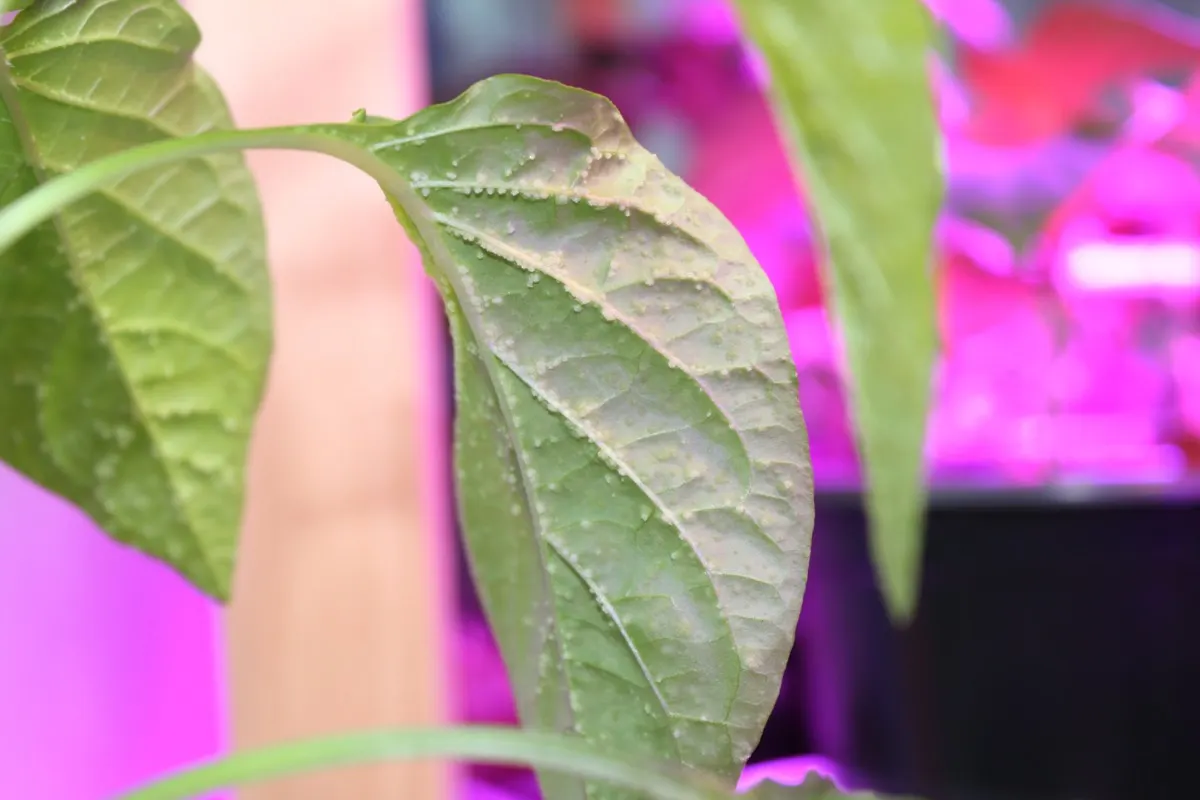
The Solution: Strange but true, overwatering your pepper plants can lead to these symptoms. These small white spots are water crystals that are a symptom of edema, also known as water blistering.
It’s best to let your plants dry out to the point of wilting before re-watering to restore the leaves to full health.
24. The Problem: Your pepper plants are getting dug up throughout the garden, or you see nibbles throughout the fruit.
The Solution: You likely have a small rodent problem. Squirrels, chipmunks, and even voles can wreak havoc on pepper plants by digging burrows that uproot them. Sometimes, these same creatures will nibble bites out of your ripening fruit as well.
Rodent traps can keep their populations in check. Consider also creating some owl habitat space so that these natural predators can feast over your frustration.
25. The Problem: Your plants are producing fruit, but they are small, misshapen, and contain few seeds.
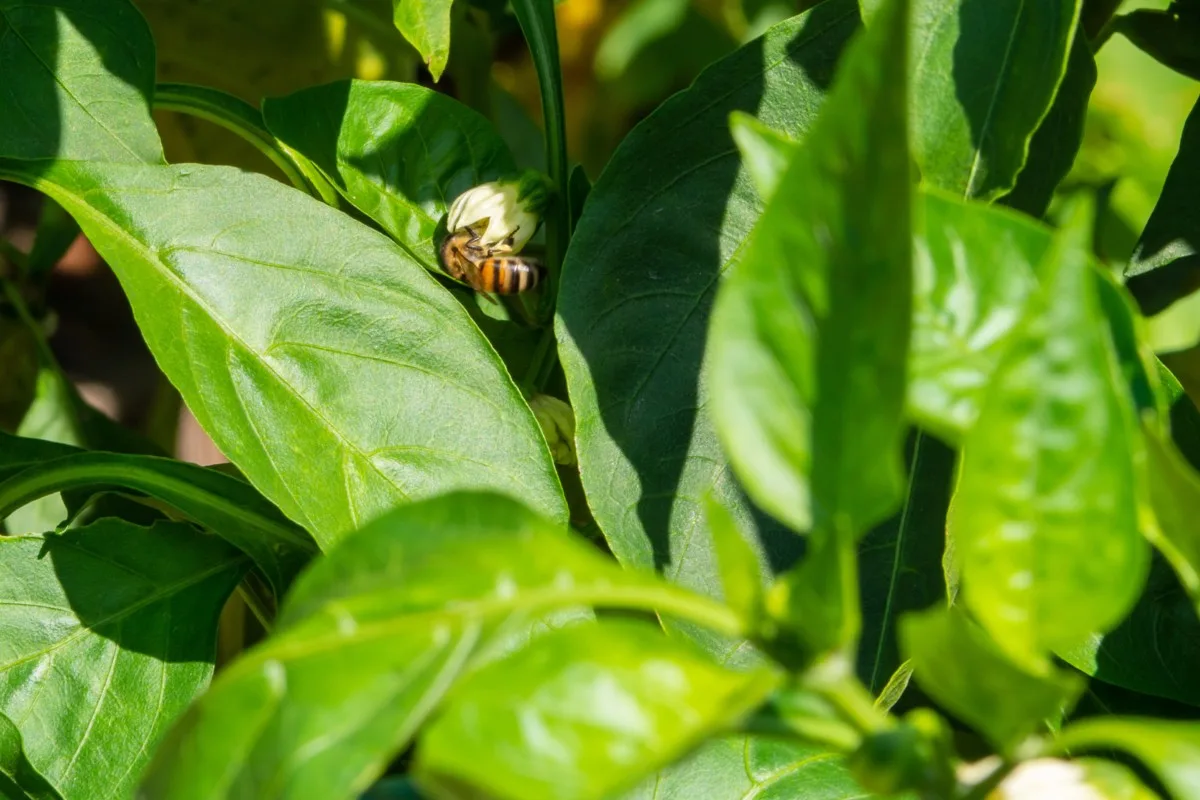
The Solution: Poorly formed fruit can indicate a pollination problem. Next season, focus on attracting bees and other natural pollinators to your garden plot with extra flowering plants. You can also lightly tap each plant each day as it blooms to distribute the pollen from one flower to another.
Click here about other ways to encourage more pollinators to your yard.
Better Manage Your Pepper Plant Problems for a Bumper Crop
Take the time to learn about the common mistakes associated with growing peppers, and you can ensure that your crop has the best chance of success.
Once you start bringing in the harvest, check out these strategies for drying your peppers at home.
Read Next:

Get the famous Rural Sprout newsletter delivered to your inbox.
Including Sunday musings from our editor, Tracey, as well as “What’s Up Wednesday” our roundup of what’s in season and new article updates and alerts.


